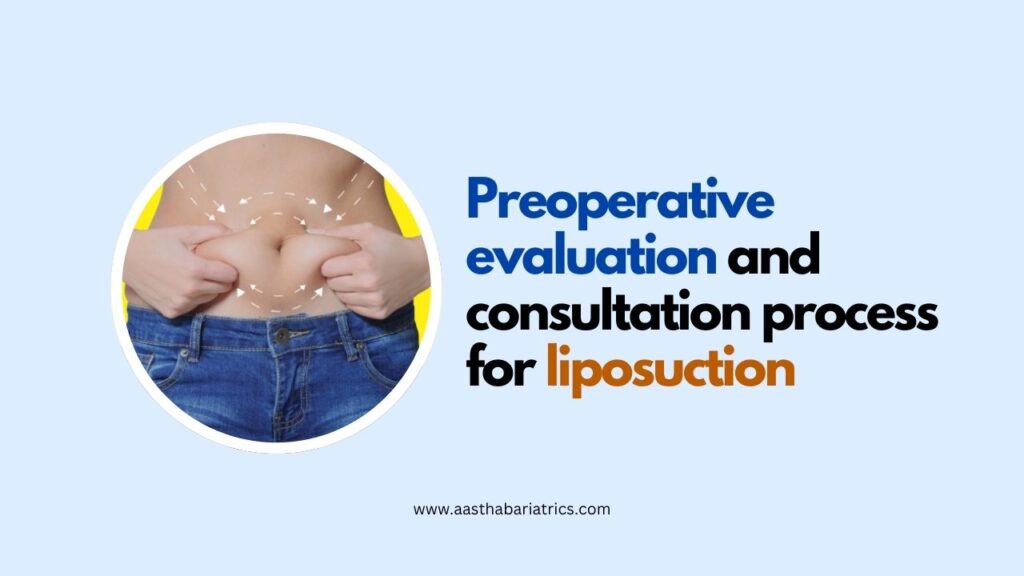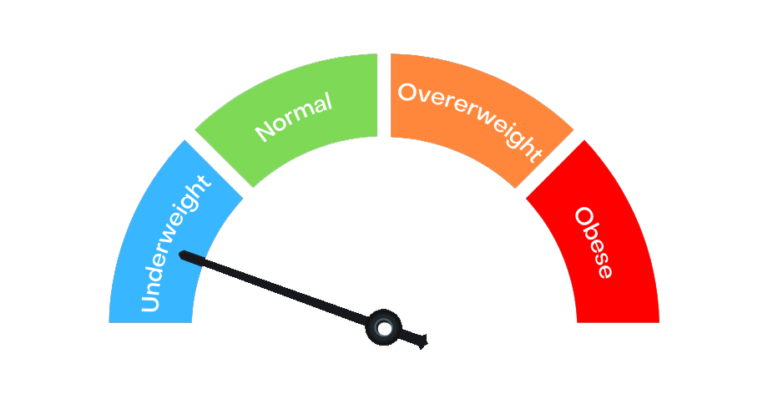
Mukta
Bariatric Dietician & Content Writer
Preoperative Evaluation and Consultation Process for Liposuction

What is Liposuction?
Lipo meaning lipids or Fats and suction is suctioning out. It is a technique in which adipose tissues or fat cells from the body’s specific areas like thighs, hips, stomach, buttocks, neck and arms are removed via vacuum suction.
Liposuction reshapes specific areas of the body through a process known as contouring. During this procedure, fat cells are permanently removed from the body using suction.
Types of Liposuction:-
- Suction-assisted liposuction
This is the most frequently used method, it involves the insertion of a mixture of saline solution and medicine into the body cavity to help remove fat through suctioning.
- UAL- Ultrasound Assisted Liposuction
Metal rod is inserted in the fat deposited sections of the body causing the fat cells to loosen up and then break down thus easing the suction.
- LAL- Laser Assisted Liposuction
A laser is put in through a small cut that breaks down the fat deposits then via tub fat is extracted.
- PAL- Power Assisted Liposuction
Thin tube that vibrates back and forth is sent in the fat deposits which helps to remove the fat more precisely and quickly.
Indications of Liposuction:-
Liposuction addresses concerns regarding fat deposits at a particular site, such as stubborn fat pockets in areas like the thighs, hips, arms, stomach, and knees, and conditions, including lipomas, angiolipomas, and gynecomastia. The procedure improves overall health and quality of life.
Ideal Candidate Criteria -
The ideal candidates for liposuction are individuals who are above 18 and in excellent health with no medical contraindications. They should possess localised subcutaneous fat deposits which are resistant to diet and exercise, good skin tone and elasticity, are of relatively weight in between BMI 25-29.9 kg/m2, and should have a constant weight. Candidates with poor skin elasticity may experience sagging of extra skin post-surgery and may require additional procedures to address excess skin.
The Preoperative Consultation -
The preoperative consultation is an important step in preparing for liposuction. During this, the surgeon conducts a proper interview of patients to know about patient expectations from surgery and physical examination to assess the patient’s suitability for the procedure.
Medical History Review:
A detailed medical history is essential to identify any conditions that might complicate surgery or recovery, such as poor wound healing, diabetes, keloid formation, hepatitis, HIV, or bleeding disorders. Medication use, including aspirin, NSAIDs, or anticoagulants, should be documented, and patients may be advised to discontinue these medications before surgery.
Diet and Lifestyle Assessment:
Crucial step generally done by a dietitian to understand the patient’s diet, exercise routine, and weight stability. Liposuction is most effective for patients with stable weight and a consistent exercise regimen. Patients actively gaining weight or seeking liposuction to slow weight gain may not be suitable for the surgery.
Psychological Evaluation:
A psychological assessment should also be performed to check whether the patient has realistic expectations and is seeking liposuction for the right reasons. Patients with unrealistic expectations or underlying psychological issues may not be suitable candidates.
Physical Examination:
Examining the areas to be treated i.e. assessing skin tone, elasticity, and the distribution of subcutaneous fat is another important step. Good skin elasticity is necessary for optimal post-liposuction skin tightening and remodelling. The examination includes stretching and moving the skin to evaluate its elastic recoil and ensure the fat is located in the subdermal space.
Patient Education and Consent
Education is a vital component of the preoperative consultation. Patients should be well educated about the procedure, including how incisions are made, how liposuction is used to remove fat, and the expected outcomes of patients. The discussion should cover expected results, potential risks, and the effect of tumescent anaesthesia.
A consent form, written in clear and understandable language to the patient, must be signed. This document should contain all information regarding the procedure, risks, alternatives, and postoperative expectations, including touch-up procedures that might be required.
Laboratory Assessments
Preoperative laboratory tests help ensure patient safety. Common tests include hepatitis serologies, HIV antibody status, complete blood count with complete blood count, and coagulation studies. For patients with a history of bleeding, additional tests like bleeding time may be ordered.
Conclusion
A thorough preoperative evaluation and consultation are key factors to the success of liposuction. Through candidate selection, educating patients on the process, and performing thorough medical and psychological evaluations, surgeons can reduce potential risks and improve patients’ successful surgery rates. Proper preparation not only ensures safety of the patient but also sets realistic outcomes and achievement of the expectations.





